TEMPLE AMNESIA
Vice President Al Gore still isn’t out of the woods regarding his controversial visit to Hsi Lai Buddhist Temple in southern California in April 1996. He has said he thought the event was “community outreach,” not a fund-raiser, and that the $55,000 the visit netted was raised without his knowledge. In a press release from the Republican National Committee, its chairman, Jim Nicholson, diagnosed the Vice President as having “Buddhist temple amnesia,” adding, “He desecrated a place of worship by shaking down monks and nuns.”
Maria Hsia, a Democratic fund-raiser who organized Gore’s Hsi Lai visit, has been convicted on five felony counts of disguising political contributions by using Hsi Lai monks and nuns as “straw donors.” She could face up to 25 years in prison and a $250,000 fine.
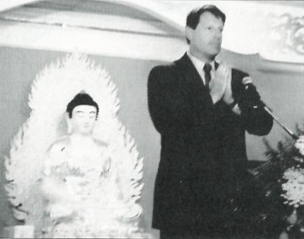
Gore was strongly criticized by Bill Bradley during the Democratic primaries regarding the Hsi Lai visit and other questionable fund-raising incidents. Gore supporters fear that the Vice President is vulnerable to similar attacks by George W. Bush during the upcoming Presidential campaign. Gore is now pressuring Bush to agree to end “soft money” contributions such as the Hsi Lai money, saying in a Washington Post article, “I know firsthand what is wrong with the way we fund our political campaigns.” Bush has refused to come to the table so far.
Gore’s critics think his denials of fund-raising wrongdoing don’t hold any water—or rather, iced tea: According to theNew York Times, Gore told the FBI that he often was obliged to excuse himself from meetings “to use the restroom” because of his iced tea drinking—and consequently may have missed a “key discussion” on fund-raising matters.
In April, two Buddhist nuns, Venerables Yi Chu and Man Ho, were indicted for failing to appear as government witnesses in the trial of Maria Hsia. A Justice Department spokesman said they had fled the country and were believed to be in Taiwan.
EVANGELISTS IN ASIA
Ten years ago there were only an estimated 200 Christians in Cambodia—today there are 60,000. Christian missionaries are making enormous inroads in Cambodia, a country that has been predominantly Buddhist for 800 years. In a January article for The Associated Press, Chris Fontaine quoted the Rev. Christopher LaPel, a former Cambodian refugee who now works as a missionary: “The Buddha never promised salvation. He claimed only to be a good teacher, but a lot of Cambodians are looking for a messiah—someone to save them.” Rev. LaPel has been known to baptize as many as 90 converts in an hour.
Some think that missionaries are taking advantage of a people bereft by war. “If our country was not so torn by war, I don’t think it would be like this,” says Yin Soeum, who grew up in a refugee camp. “That’s why Christians are considered so good. They offer jobs and give people money.”
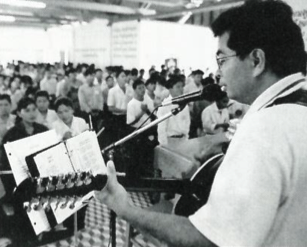
Elsewhere in Asia, at a meeting in Lumbini, Nepal in November, Hindu and Buddhist leaders met to discuss unifying the two faiths against Christian missionary efforts, the AP reports. Conversion was described as “war against Hindus and Buddhists,” and “a mental crime.” The World Hindu Council estimates that there are almost 200,000 missionaries in India, both foreign and Indian—“larger than the Pakistan army,” said a representative. According to the AP report, many at this conference felt that “the reason South Asians feel attracted to Christianity is because they do not understand the depth of their own religion and culture.”
BREATHING THROUGH BARS
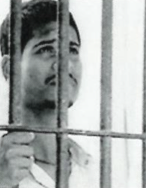
Vipassana meditation has made noticeable differences in the lives of prisoners in India. Dr. Kiran Bedi, India’sfirst woman inspector general of police at the Tihar Central Jail in Delhi, introduced the meditation program. Jihar houses between 8,500 and 9,000 inmates, including more than 450 women. In a review of prisoners following Dr. Bedi’s course, most reported that they had better control of their anger, suffered less stress, felt less self-centered, and extended help and cooperation to fellow convicts.
Dr. Bedi’s meditation master, S.N. Goenka, refers to her as “Karuna Bedi.” On the success of her program, she told a reporter, N. Mutukumara, in Sri Lanka, “Most prisoners addicted to smoking and liquor gave up both of those bad habits. Some prisoners said they had no hatred toward those who had implicated them. Still others said [that] when they are released from jail they will become messengers of Vipassana in their home localities.”
Following Dr. Bedi’s success at Tihar, India’s Home Affairs Ministry held a meeting with all of its inspectors general of prisons. It was decided to introduce Vipassana in prisons throughout India.
Goenka’s Vipassana program in prisons was introduced in the U.S. in 1997. The first was a 10-day program at Seattle’s North Rehabilitation Facility. One female inmate, who was convicted of stabbing a woman with a screwdriver and a knife, said of her experience with Vipassana: “I [now] know there’s a way I can come out of that anger.”
SGI HERO
“I’ve never seen a more unselfish act in my life. . . .” This was a policeman’s comment about the heroism of a Vancouver Starbucks manager, Anthony McNaughton. McNaughton, a member of Soka Gakkai Inter -national, was fatally stabbed while defending a co-worker from a knife-wielding attacker on January 29 of this year. The Vancouver Postquoted the officer as saying, “I really thought I knew what heroism was. But it wasn’t until I saw how unselfish this man was in jumping between an enraged, gutless man with a knife and the woman he was intent on killing, that I really appreciated it.”
McNaughton had been a member of Soka Gakkai for 12 years. Douglas Todd, writing for beliefnet.com, reported that friends of McNaughton believe it was his devotion to Buddhist principles of nonviolence that motivated his action.
In another report in the Seattle Post-Intelligencer, a friend of McNaughton’s said, “He practiced his Buddhist faith in everything he did every day. He believed in respect for other people, respect for himself and responsibility for his actions. . . . We believe that’s how he died, performing an act of good to deal with something that he would not tolerate—an act of violence against someone else.” McNaughton’s last words were to tell his co-worker to run.
Vancouver police and others have proposed nominating McNaughton for the Cross of Valour, the highest award a civilian can receive in Canada. The BC Restaurant and Foodservices Association has established a memorial fund in his name.
SITTING TALL
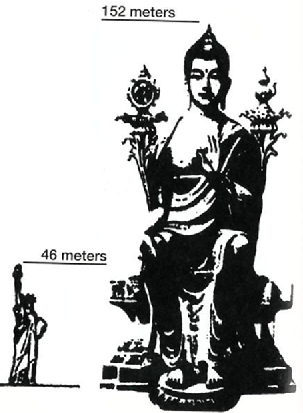
They say it will dwarf the Statue of Liberty three times over. In fact, the planned Maitreya Buddha in Bodhgaya, India will be the world’s largest statue—500 feet tall with a life expectancy of at least 1,000 years. An international consortium called the Maitreya Project will fund the statue, which is expected to cost the equivalent of $150 million and is due to be completed in 2005. The statue’s full height will be equal to that of a 50-story building, with the Buddha sitting on a 17-story throne. Lama Zopa Rinpoche is spiritual advisor to the project, which was initiated by the late Lama Thubten Yeshe, who died in 1984 (see Dharma Talk, page 28).
TRUST AT OXFORD
Michael Aris, the late husband of Burmese opposition leader Aung San Suu Kyi, was a Tibet scholar at Oxford who, before his death last March, had helped to raise $2 million for endowments, scholarships, and resources in his field. His family and colleagues have now established a trust in his name to honor his commitment to education and research for Tibetan and Himalayan studies at Oxford. The trustees have already endowed a post as University Lecturer; the appointee (not named at the time of printing) begins teaching in October 2000. For more information, e-mail:aristrust@serindia.com
CHAINS AND ROBES
In a society that still largely views mental illness as a source of shame and embarrassment, Taiwan’s Lung Fa Tang (Dragon Metamorphoses Temple), a self-styled Buddhist mental rehabilitation center, offers vital psychiatric care to needy patients at little cost. To many it is a working symbol of the Buddhist principle of compassion—until a daring escape by three patients from the facility in February raised questions. A subsequent investigation reported inNewsweek International has exposed some troubling concerns about the center and its practices.
Founded some 30 years ago, Lung Fa Tang continues to be run by its founder, a self-proclaimed Buddhist monk named Master Kai-feng, and 17 other monks and nuns. According to Newsweek, the facility has no doctors or psychiatrists on staff and does not keep formal records on its patients. The institution would not make public information on the number of patients who have left the facility or died under its care. Nearly a third of its 650 patients are shackled to one another with chains—what administrators call the “chain of feeling”—intended to “connect” patients to each other and prevent them from fleeing. According to the testimony of some former residents, patients are driven to the center’s poultry farm, the largest in Taiwan, where they are forced to work long hours of hard labor without pay, 365 days a year.
Newsweek also raises serious questions about the financial practices of Lung Fa Tang. Master Kai-feng, who is accorded almost godlike status at the center (where his image has replaced that of the Buddha), served six months in jail in 1984 for fraud. And although the center says that it does not charge fees for its services, families are reportedly encouraged to contribute large sums of money, as much as $75,000, to the facility.
SIMPLY CRAVING
In the eighties, Wall Street’s Gordon Gekko said, “Greed is good,” and an entire decade followed him into the desire pool. Now, striving for simplic- ity has become a mainstream mantra. But for many Buddhists, simplicity—as marketed by Madison Avenue—is a dressed-down version of another slippery slope. What would we do without marketers to tell us what to crave? Or advertisers? This spring two new major consumer magazines have been introduced to fuel our desire for doing less and buying more to do it: Real Simple is from the publishing powerhouse Time, Inc., whosePeople magazine has the largest circulation on earth—35 million. Simplicity, from Simplicity Media, Inc., looks very similar. And on the Internet, besides the websites for the two new magazines, there’s Oprah Winfrey’s Oxygenmagazine’s site called 02Simplify.com. Yet another site is called slnet.com; the “sl” stands for simple living.
The numbers look good for readers wanting more of the simple life. At Real Simple, research revealed that 68% of the women polled, aged 25-54, “would give up the responsibilities of their day-to-day life for a quieter, simpler life,” and 87% said that “more and more they will be looking for ways to simplify their lives.” However, the magazine’s publicity points out that “these same women indicate a strong desire to maintain rich and active lifestyles—they don’t see simplification as deprivation.”
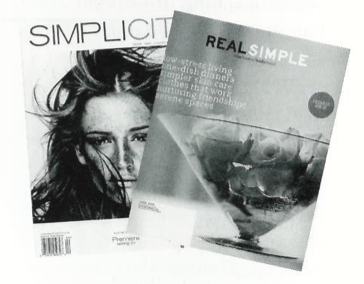
Real Simple’s introductory issue is far from the notion of deprivation. With ads for everything from fashions, food, and cars to tile cleaner and kitty litter, its 112 pages of advertising are more than for any other Time, Inc. launch.
Buddhists make appearances in both new magazines. In Simplicity Robert Thurman (see Tricycle interview, Spring 2000) answers “10 Questions on Buddhism,” and Clark Strand, former senior editor at Tricycle, writes about seven practices for “Simply Living.” Mary Talbot, former executive editor of Tricycle (see Book Reviews, this issue), writes on yoga in an article titled “Om” for Real Simple.
In Simplicity, Executive Editor Sherry Amatenstein writes, “Great minds from Gandhi to Buddha to Thoreau have set impressively personal examples for living the simple life. Although in theory the concept seems simple, we flounder when we actually seek to achieve it.” Time will tell if those who flounder will simply find new ways to shop.
THE CELLULOID TRAIL
Buddhism isn’t the central component in a couple of new films, but references to it are strong enough to upset a foreign government and make American headlines. Earlier, there was controversy in Thailand about Leonardo DiCaprio’s filmThe Beach, because of the environmental havoc it is reputed to have made during filming. A lawsuit has been filed by environmentalists. Then, last spring, a Thai parliamentary committee suggested recalling the film’s distribution because of an unflattering opening image of the Buddha – placed in an entertainment zone in Thailand. Filmmakers deny its portrayal is negative, claiming the opening Buddha shot was simply to identify the country. Meanwhile, the film’s premiere in Bangkok pulled a packed audience of more than 1,000 dignitaries and members of the media.
Far edgier is the television portrayal of Buddhism in a Showtime film, God’s Favorite, which aired in late March. Here, a fictional Manuel Antonio Noriega is portrayed as a Catholic who turned Buddhist and practices a bit of voodoo. Bob Hoskins is the converted vegetarian general known as Tony Noriega, who, besides being a new Buddhist, is anti-smoking, a cold-blooded murderer, and sexually active with, among others, his middle-aged wife, a young mistress, prostitutes, and the male pilot of one of his official planes.
Thank you for subscribing to Tricycle! As a nonprofit, we depend on readers like you to keep Buddhist teachings and practices widely available.